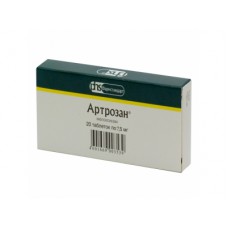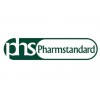Expiration date: 06/2026
Tablets:
Action:
anti-inflammatory, analgesic, antipyretic.
Composition:
meloxicam 7.5 or 15mg
auxiliary substances: potato starch, lactose monohydrate, povidone, trinacria citrate, magnesium stearate, silicon dioxide colloidal
Indications:
- rheumatoid arthritis, osteoarthritis, gout
- pain in the spine, neuralgia, myalgia, traumatic inflammation of soft tissue and musculoskeletal
Pharmacological action:
NSAIDs, anti-inflammatory, antipyretic, analgesic effect. Belongs to the class of oxicam derived anoliefo acid. Mechanism of action - inhibition of Pg synthesis by the selective suppression of the enzymatic activity COG2. When administered in high doses, prolonged use and individual characteristics of the organism COG2 selectivity decreases. Inhibits synthesis of Pg in the field of inflammation to a greater extent than in the mucous membrane of the stomach or kidney, which is associated with a relatively selective inhibition COG2. Less common causes of erosive and ulcerative diseases of the gastrointestinal tract.
Indications:
Rheumatoid arthritis, osteoarthritis, ankylosing spondylitis (Bechterew's disease) and other inflammatory and degenerative diseases of the joints, accompanied by pain syndrome.
Contraindications:
Hypersensitivity (including to the NSAID etc.), "aspirin" triad (combination of bronchial asthma, recurrent polyposis of the nose and paranasal sinuses and intolerance of ask and pirazolonovogo LS series). Peptic ulcer and 12 duodenal ulcer (in acute phase), severe liver failure, chronic renal failure in patients not undergoing dialysis, children's age (under 15 years), pregnancy, lactation.C caution. Old age. Rectal (optional): inflammatory diseases of the rectum and the anal Department, rectal or anal bleeding (including history).
Side effect:
From the digestive system: nausea, vomiting, belching, abdominal pain, constipation or diarrhea, flatulence, increased activity "liver" transaminases, hyperbilirubinemia, stomatitis, erosive-ulcerative lesions of gastrointestinal tract, gastrointestinal bleeding (concealed or apparent). Allergic reactions: skin rash, itching, blisters. From the nervous system: dizziness, headache, drowsiness. Organs of hematopoiesis: anemia, leukopenia, thrombocytopenia. From the CCC: increased blood pressure, "tides" of blood to the face and upper part of the chest, palpitations. From the urinary system: swelling, gipercreatininemia, increasing the concentration of urea. In rare cases, interstitial nephritis, glomerulonephritis, renal medullary necrosis, nephrotic syndrome. Other: ringing in the ears.
Overdose:
Symptoms: increased side effects. Treatment: specific antidotes and antagonists are not shown gastric lavage and symptomatic therapy.
Method of application and doses:
Inside, during EU, in a daily dose of 7.5-15 mg. Maximum daily dose of 15 mg, in patients with severe renal insufficiency, hemodialysis, - 7.5 mg. With a slight or moderate reduction in kidney function (QC over 25 ml/min), and cirrhosis of the liver in a stable clinical condition, dose adjustment is not required. The initial dose in patients with an increased risk of side effects is 7.5 mg/day. Rectal 15 mg (one candle) 1 time per day.
Special instruction:
In the occurrence of peptic ulcers or gastrointestinal bleeding, development of side effects in the skin and mucous membranes, the drug should be discontinued. In patients with reduced BCC and reduced glomerular filtration (dehydration, CHF, liver cirrhosis, nephrotic syndrome, symptomatic kidney disease, diuretics, dehydration after major surgery), you may receive clinically significant CKD, which is completely reversible after discontinuation of the drug (in these patients, early treatment should be monitored daily diuresis and renal function). The steady and significant increase in transaminases and changes of other parameters of liver function the drug should be discontinued and conduct control tests. In patients with an increased risk of side effects, the treatment begins with a dose of 7.5 mg In ESRD patients undergoing dialysis, the dose should not exceed 7.5 mg/day. During the period of treatment must be careful when driving and occupation of other potentially hazardous activities, require high concentration and psychomotor speed reactions (if you experience dizziness and drowsiness).
Interaction:
At simultaneous reception with other NSAIDs increases the risk of ulcers and gastrointestinal bleeding, increases the concentration of Li+ in the plasma reduces the effectiveness of VMK, hypotensive drugs, indirect anticoagulants, tiklopidin, heparin, thrombolytics increase the risk of bleeding, methotrexate enhances the myelodepressive effect, diuretics increase risk of renal dysfunction and cyclosporine increases nefrotoksicescoe effects, cholestyramine accelerates the elimination. Mielotoksicskie HP increase symptoms gematotoksichnosti drug.
Description of the drug Artrozan is not intended to assign treatment without a doctor.






